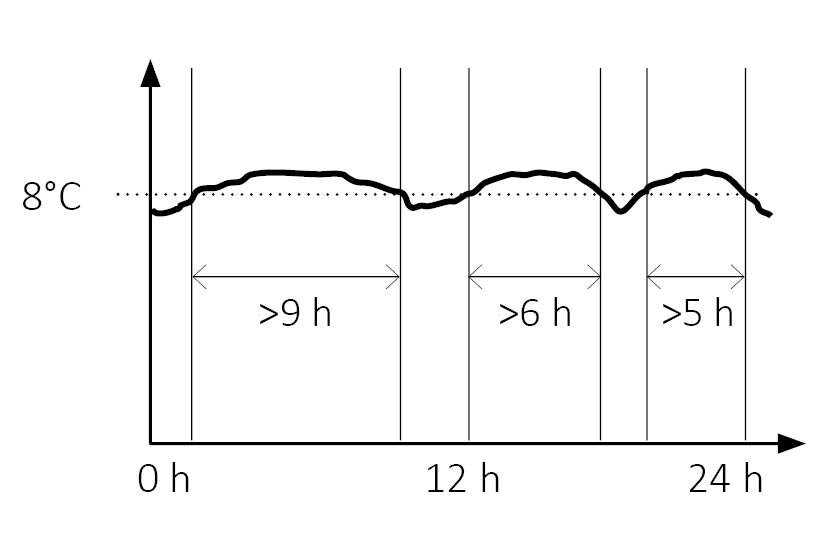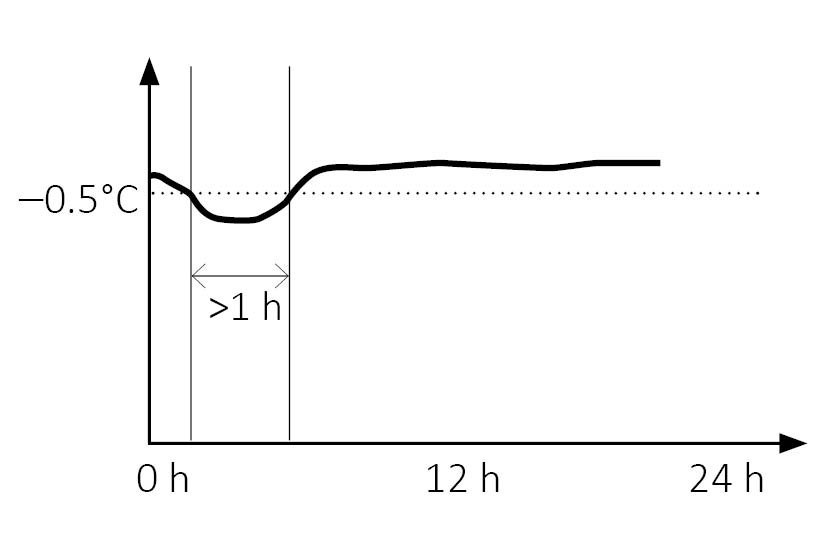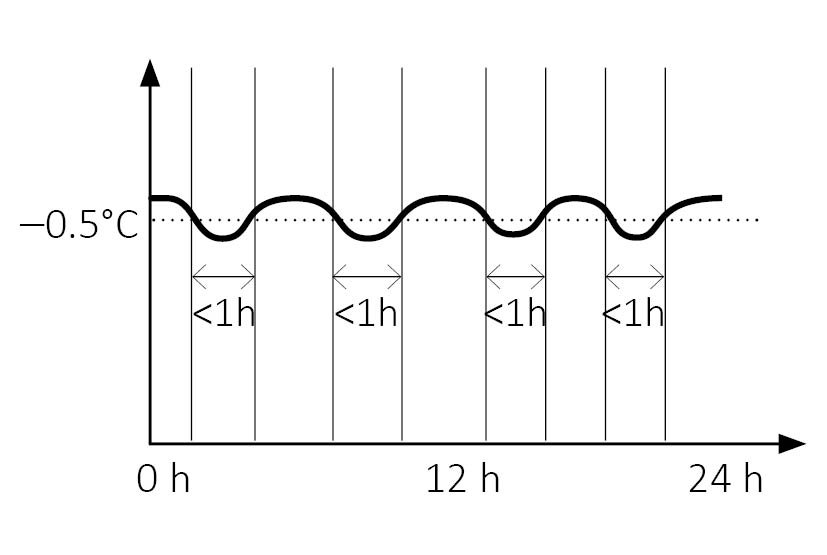Single-event alarm triggering
The upper or lower alarm triggering is done with a single-event alarm algorithm. Any kind of alarm is triggered if the temperature is continuously out of the preset alarm limits for longer than the preset alarm trigger time.
Upper alarm triggering
Setting upper limit: Temperature >8.0°C, duration >10 hours
For the upper alarm to be triggered the temperature needs to be continuously above 8°C for more than 10 hours.
Alarm triggered: alarm symbol and warning symbol
displayed.

In the example below the sum* of the daily upper temperature deviation is about 20 hours. No alarm will be triggered! The temperature was not continuously out of the preset alarm limits for more than 10 hours in one row.
No Alarm triggered: OK symbol on the display.

*The sum of the deviations is visible in the daily statistics in the column “Cumulative daily time above the limit.”
Lower alarm triggering
Setting lower limit: Temperature <–0.5°C, duration >1 hour
For a lower alarm to be triggered the temperature needs to be continuously below –0.5°C for more than 1 hour.
Alarm triggered: alarm symbol and warning symbol
displayed.

In the example below multiple low temperature deviations* are occurring. No alarm will be triggered. Each temperature deviation was less than 1 hour out of the preset alarm limits.
No Alarm triggered: OK symbol on the display.

*The sum of the deviations is visible in the daily statistics in the column “Cumulative daily time below the limit.”


